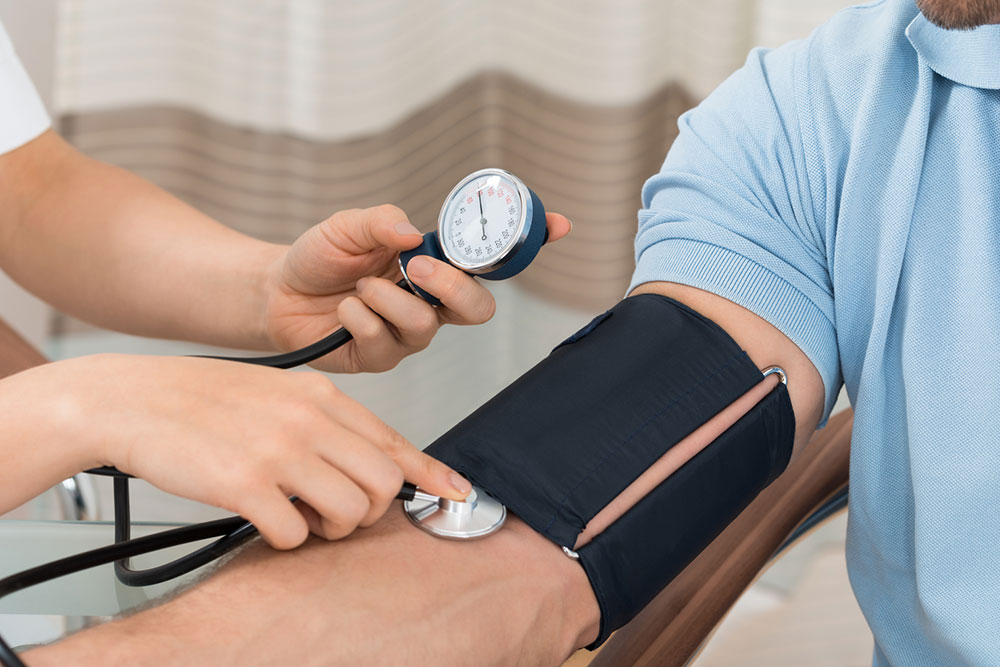Understanding Blood Pressure Chart Readings
It is important to understand the blood pressure range and ideal blood pressure as per age to keep a track of your health. Your heart beats and pumps oxygen and blood to the organs. The pressure with which it pushes against the vessels is called blood pressure. High blood pressure can be an early sign of a major disease such as heart attack or stroke.

Everyone, between the age of 17 years and 60 years, as well as those who are above 60 years, should show the following readings if their pressure is normal:
Low systolic – It should be less than 90
Low diastolic – It should be less than 60
Normal systolic – It should be less than 120
Normal diastolic – It should be less than 80
Elevated systolic – It should range between 120 and 129
Elevated diastolic – It should be less than 80
The blood pressure readings will naturally be a little different in the case of hypertension.
Stage 1 – Systolic is between 130 and 139, while diastolic is between 80 and 89.
Stage 2 – Systolic is above 140 in this case, and diastolic is above 90.
Understanding blood pressure measurements
You can read the blood pressure by understanding the two numbers i.e., systolic blood pressure and diastolic blood pressure. The systolic blood pressure measures the pressure on the walls of the vessels as your heart contracts and beats. It is recorded as the upper number in your blood pressure reading.
On the other hand, diastolic blood pressure is the pressure applied to the walls of the vessels when the heart is relaxing. In a blood pressure reading, it is considered as a bottom reading. The blood pressure is reported by placing the systolic number first and then it is followed by the diastolic number. For instance, if you have normal blood pressure, it will be reported as 120/80. This is how you can read the blood pressure charts.
Depending on your age, normal blood pressure can range from 110 to 134, for systolic, and 75 to 87, for diastolic. If your blood pressure range is defined as normal by your physician then it means that you are living a healthy life. However, if it is abnormal and is high or low, then you might have to check your health and get the blood pressure back to normal.
When should you be worried?
There is absolutely no reason to fret if your blood pressure falls within the normal range. However, you do have to be alert as soon as you notice a fluctuation in it. If your blood pressure is above 180/120 mm Hg then it indicates major health issues. Referring to the high blood pressure chart can help you in identifying whether you are at risk. You should also look for the following symptoms along with an increased blood pressure.
- Chest pain
- Visual changes
- Shortness of breath
- Dizziness
- A headache
- Loss of muscle control in the face
If you experience any of these symptoms as well as high blood pressure then you must check with your doctor. It could indicate a major health issue which if ignored can lead to heart attack or stroke.
Tips to maintain your blood pressure levels
- Balanced diet: If you wish to maintain a normal blood pressure, then you must follow a healthy diet that has seeds, nuts, lean proteins, vegetables and beans that can help in keeping the blood pressure normal. You should avoid Trans fats, processed foods, and red meat. Moreover, cutting down your saturated fats and sugar intake will also keep the blood pressure in the normal range.
- Reducing salt intake: Salt is known to raise the blood pressure which is why you should avoid putting excessive salt in your food. Ideally, you should consume a little more than half a teaspoon of salt per day. The reason why you should avoid restaurant meals and processed foods is that they have high salt content. High salt intake increases fluid retention in the body which is responsible for the high blood pressure.
- Regular exercise: Exercising is known to help the body release nitric acid which ultimately lowers the blood pressure. Thus, staying active is immensely helpful in keeping the blood pressure in a normal range.
- Reducing caffeine intake : Keep a strict check on your caffeine intake. Consult your doctor and see if caffeine sensitivity is affecting your blood pressure levels.
- Exercising : Being consistent is important to successfully manage your blood pressure levels. It is recommended that you exercise around 30 minutes daily rather than hitting the gym for long hours on weekends.
By following the tips mentioned above, you can keep yourself fit and maintain the ideal blood pressure. You can refer to the blood pressure chart every now and then to monitor your health and take positive action to stay fit. Consulting your doctor in case of any abnormalities and going for regular check-ups is a great way to maintain your blood pressure.











